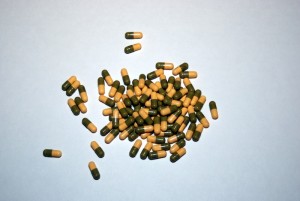A new drug for hepatitis C is fueling hope that this chronic, potentially fatal liver disease could one day be eliminated with a simple pill. But the drug’s hefty price tag raises questions of whether profit-based drug development is the best approach to tackling public health problems.
Sovaldi, the brand name for sofosbuvir, offers a faster and simpler treatment for the more than 3 million Americans with chronic Hepatitis C virus infection. A single course requires only one pill a day for twelve weeks, compared to current treatments that consist of up to a year of weekly injections.
However, the manufacturer of the drug, Gilead Sciences, has set a hefty price tag for the breakthrough drug—at $1,000 a pill, 12 weeks of treatment would cost $84,000. Add in the other medications that generally need to be taken alongside Sovaldi, and the cost jumps to over $100,000.
Backlash to High Cost of Daily Hepatitis Pill
No doubt Gilead would claim it is simply offsetting the expense of bringing a new drug to market, but the backlash has already started.
The U.S. Senate Committee on Finance recently launched an investigation into the pricing of Sovaldi, writing, “Given the impact Sovaldi’s cost will have on Medicare, Medicaid and other federal spending, we need a better understanding of how your company arrived at the price for this drug.”
While this may score points at election time, asking for pricing information after a drug has already hit the market may not be the best way to curb the rising cost of prescription drugs, especially when it comes to tackling epidemics like hepatitis C, HIV/AIDS and maybe even obesity.
New Solutions Needed to Combat High Drug Prices
One solution to high drug costs, of course, is government price controls. However, this requires walking a fine line between covering the expense of research and development and ensuring wide access to medications. Some studies also suggests that this approach might slow down drug development or shift it to countries with fewer price restrictions.
Another option is to take profit out of drug development entirely. St. Jude Children’s Research Hospital has successfully used this method for years to provide no-cost cancer treatment for all of its patients. This, of course, requires an ample source of funding—in the case of St. Jude, 75% of the hospital operating costs comes from public contributions.
A third approach, one that capitalizes on the expertise of the pharmaceutical companies, is one favored by the Bill & Melinda Gates Foundation in its attempts to tackle diseases that affect the developing world. In exchange for access to a large global market, pharmaceutical companies agree up front to affordable drug pricing.
Whichever direction the debate heads, affordable drug prices are best for all parties, especially in an era of steeply rising healthcare costs. If drug companies continue to insist on reaping huge profits for each new drug, they might eventually run out of customers with deep enough pockets to keep paying out.



